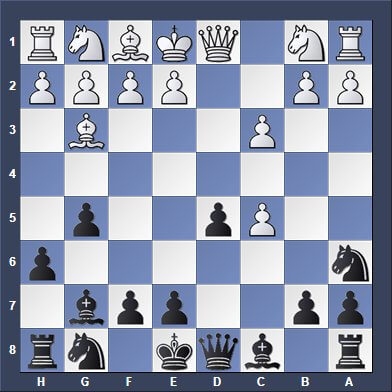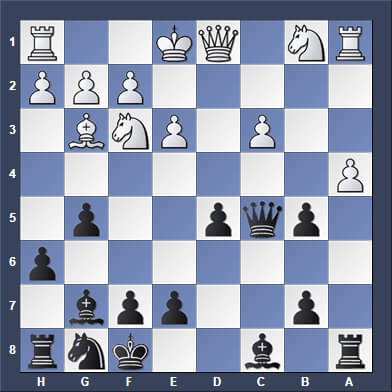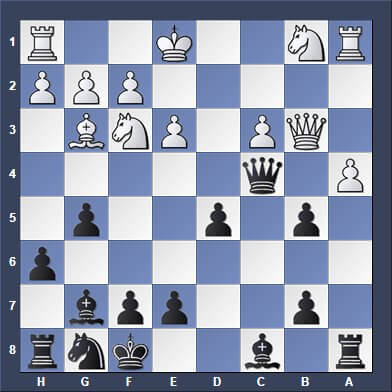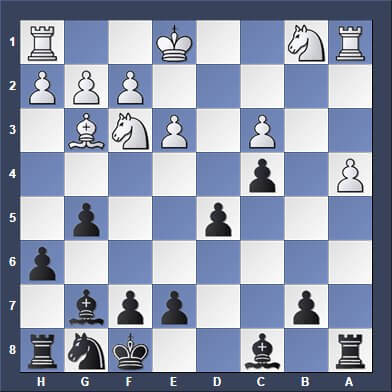Imagine you have the black chess pieces! Study the chess principles that follow. EVERY MOVE MUST FOLLOW a Chess Principle! If it does not, then this move is crap! Don’t become a wood pusher in chess.
Every move is gold. You need plenty of time to ponder about a move. So don’t play Blitz games, this doesn’t help to become a good player because you don’t have TIME to think. If you are not a grandmaster you are just pushing wood in a blitz game, that’s all.
Don’t become a Wood Pusher
1..d5 Chess Principle: Control the Center
1.d4 d5 White moves

Black has answered 1…d5 to control the squares e4 and c4 and to stop the white center pawn to advance further gaining center space.
2..h6 Chess Principle: Earning a FREE MOVE while attacking the INSTABLE BISHOP to make a LUFTLOCH.
2.Bg5 h6

Black EARNS the free move (2..h6), where you don’t lose a development tempi as you attack the INSTABLE BISHOP, which must retreat, losing a tempi for White.
The move h6 is useful as it controls g5 and enables the follow up move g5 later on, followed by the development of the inactive bishop to g7. In other words Black gains a tempi. One tempi = one move. The move h6 is NOT very effective but it is FREE! This is the point. It does not cost you anything, a tempi, I mean, but h6 is a nice little practical move, that improves your chances a little bit! It puts some spice into the game as it enables g5 AND if the bishop goes to h4 then it is cut off from the queenside! It can not come for help to the queenside when the house is on fire.
So both players have violated chess principles in this situation. White loses 1 tempi retreating the bishop and not developing a piece instead. Black made a pawn move (h6) that can not be considered a development move as he should have developed a piece instead. Both players have committed a violation and this makes it even.
Both players violated the following chess prinicples:
White: Don’t move twice with a piece in the opening. (He moved the bishop twice)
Black: Don’t push pawns in the opening, especially edge pawns, but develop a piece. (He played h6)
So the game is even. Let me say it drastically:
Two dumb Moves neutralize each other.
I hope you can follow me. h6 is a dumb move by itself in the opening stage of the game. It is only justified by the dumb move Bh4 that moves a piece twice. Got it now?
Note: A Luftloch is a German word and means: Airhole (breathing hole) It would be handy to have a Luftloch after Black has castled. Because the king can escape to h7 and will not get checkmated on the backrank by a rook or a queen.
3…c5! Chess Principle: The dark-running Bishop has left the white Queenside and can’t retreat to the Queenside anymore. Conclusion: The Queenside’s DARK Squares are weak.
3.Bh4 c5

Black’s move c5 attacks a dark square (d4) AND opens up lines for the black queen which will work on the dark squares at the queenside, which are WEAK, because the queenside bishop is cut off and can’t control the dark squares at the white queenside any more. This is not a pawn sacrifice as Black will regain the c-pawn later on as it becomes WEAK. You have to invest a pawn temporarily to get going.
Gaining a Tempi to develop the black Bishop to g7
4.dxc g5

After 4.dxc Black plays g5 with gaining a tempi, as he wants to develop his kingside bishop to g7.
Chess Principle: Develops a Piece quickly
5.Bg3 Bg7

Chess Principle: Build a Wall to reduce the Bishops Power with c3. Chess Principle: Develop a Piece! Na6
6.c3 Na6

Black develops the queenside knight to an ACTIVE position as it attacks the weak pawn at c5. White cannot protect it with b4 as Nxb4 will capture the pawn and White can’t recapture because the rook will be lost after BxR. Black wants his pawn back quickly.
White wants to develop his Kingside pieces to be able to castle short.
7.e3 Nxc

White has to move the important e-pawn (center pawn) to get his kingside pieces out otherwise he cannot castle.
Black got his pawn back! Now he can think about moving his queen out to b6 attacking the dark square b2 or develop his kingside knight.
Chess Principle: Misplaced Bishop
8.Bb5+ Kf8

Black moves his king away from the check and improves his king safety. He could have protected against the check playing Bd7, however, the king move is stronger as it creates a MISPLACED BISHOP on b5 which will be attacked by the queen later on. This would develop the queen with GAIN OF TIME winning a tempi!
The king move looks dubious, but is stronger.
Chess Principle: Develop a Piece!
9.Nf3 Qb6

Both players have developed a piece. This is good. Black gains a tempi on the MISPLACED BISHOP which has to be protected or must retreat after Qb6.
10.a4 a6

Black wants to chase the bishop away as the queen can capture the unprotected b-pawn after that.
Get this: The b2-pawn is unprotected because the white queenside bishop is locked up at the kingside! The house in on fire and the bishop at g3 cannot come to help. This is the concept of this game!!
Before you make the “dubious pawn move a6”, you have to justify it and find chess principles that do justify it!
Justification: 1. White has played a “dumb move” a pawn move (it does not develop a piece) namely a4, to protect his bishop and to cut off the black queen to protect his b2-pawn.
This means Black can afford to make a “dumb move” also, playing a6, (which does not develop a piece especially not the kingside knight).
Two dumb Moves neutralize each other. Remember?
In a normal game you would just move out piece after piece and castle. But this game is unusual and is getting complicated and out of control. To find your way through all complications you need to follow chess principles or you get lost in the complexity and make a blunder.
Chess Principle: Trade Knight for Bishop in open Position.
11.b4 axB

The black knight is attacked now (b4) and Black must make a decision. He follows the chess principle: Get bishop for knight in open positions because a bishop is more flexible than a knight when the game opens up.. and it does open up here. So he captures the bishop axB. He wins a pawn as well..
12. bxN Qxc

Black is a pawn up but the game is still very complex.
Simplify
13.Qb3 Qc4

As Black is a pawn up and his king can’t castle anymore he should consider to trade queens and go into the endgame. In the endgame the black king is safe as the dangerous queens are not on the board. The white queen can’t capture on b5 because after 14.Qxb5 QxQ White cannot recapture because he would lose his rook.
Chess Principle: Recapture Pawns towards the Center!
14.QxQ bxQ

Black recaptures towards the center after 14.QxQ bxQ. He gets rid of his weak b-pawn, which has moved a row ahead now – from row 5 to row 4 deeper into the opponents territory, and a file closer to the center – from file b to file c. This pawn has GAINED IN VALUE! Try to understand this. This concept is very important. The pawn on b5 has improved his position and is sitting now on c4.
Chess Principles: Force trades when you are up in material. Undermine the position of well centralized pieces. To Take is a Mistake.
15.Be5 g4

Black does not capture the bishop after 15.Be5, because this would violate the chess principle: To take is a mistake. This means, if you take the bishop you develop your opponent’s knight which would come to the center. (15.Be5 BxB 17.NxB) Never develop your opponent!
Black develops his king. Chess Principle: Attack enemy outposts.
16. BxB KxB 17.Nd5 e5

White is forced to capture and develops Black’s king. However, White got rid of his aimless bishop.
The white knight moved into the center and must be driven away by e5.
Chess Principle: Develop a Piece
18.Ne2 Nf6

Black finally develops the sleeping knight to its natrual square f6 from where it controls the center.
Chess Principles: Develop a Piece (Nd2) – Fix a weak Pawn (Ra5) then attack it.
19.Nd2 Ra5

Black intends to attack and win the weak pawn on a4. This pawn is sitting on a WHITE SQUARE. Black has a WHITE-RUNNING Bishop so he has to nail this pawn to the white square a4, play the bishop to d7, and after this double up rooks along the a-file to attack and win the a-pawn.
Black is winning. That’s it. I wanted to demonstrate chess principles in action.
Understand the chess principles of this game
Get UNIQUE Chess Courses from Chess Grandmaster Igor Smirnov (Ukraine)! BIG DISCOUNT! Click here!




